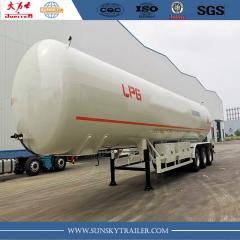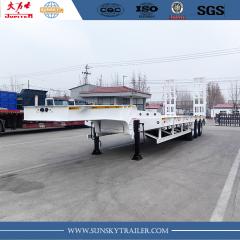Nothing is more appealing than a sparkling tank. Customers appreciate seeing a clean tank because it portrays the owner and the brand in a positive light. A filthy, unappealing tank, on the other hand, is unappealing and can turn off customers. We understand how critical it is to keep your stainless tanks in good working order. We created a list of dos and don'ts to ensure that your tank always looks its best.
Cleaning stainless steel tanks are different from cleaning tractor-trailers or other commercial vehicles. Stainless steel tanks are more corrosion resistant, hygienic, cost-effective, and environmentally friendly than other materials. However, they are vulnerable to damage.
These tanks require extra caution when cleaning due to their gleaming stainless steel appearance. Using the wrong cleaning product can damage stainless steel, making it look even worse than it did before. Spots can also be caused by not thoroughly rinsing the tank after using soap. This is unappealing as well.
Check out these tips for keeping your stainless steel tankers clean and gleaming:
Stainless steel should not be cleaned with bleach
Stainless steel and chlorine do not mix. The steel's finish will tarnish, and dirt will collect in the cracks. Because many cleaning products contain chlorine bleach, read the label carefully when selecting a cleaner. If you get chlorine on your stainless steel by accident, rinse it off immediately and thoroughly.
Rinse thoroughly
Water that remains in your tank can leave a residue. It can also stain the stainless steel on the surface over time. Any cleaning solution that remains on the stainless steel surface can also cause damage. A crucial step in the cleaning process is rinsing your stainless tank.
Against the Grain Scrub
Scrubbing the stainless steel surface with the grain cleans it and helps to keep its original finish and texture. Scrubbing with the grain is an easy way to clean the tiny grooves where dirt and dust get trapped.
Get rid of the thick mud
Use a pressure washer to remove the large chunks. If at all possible, allow the surface to dry before applying the chemical, as it works best on a dry surface. If you don't have time to wait for the surface to dry, the chemical's strength may need to be increased.
Because of its gleaming stainless steel surface, a tanker trailer requires extra special cleaning attention. Chemical burns can damage the tanker's surface if the wrong chemical is used in the cleaning process, making it appear worse than if the stainless steel tanker truck had not been washed at all.
Unsurprisingly, thorough cleaning of the tanker's interior surface between cargoes is the primary method for ensuring product integrity and consumer safety. The first and most important step in this process is to thoroughly clean and passivity the tanker's interior.
The contents of a tank that has been thoroughly passivity will have less interaction. Electro polishing is also advantageous because it produces a smooth, easy-to-clean surface finish that makes it more difficult for debris or other potentially corrosive conditions to adhere to the surface.










